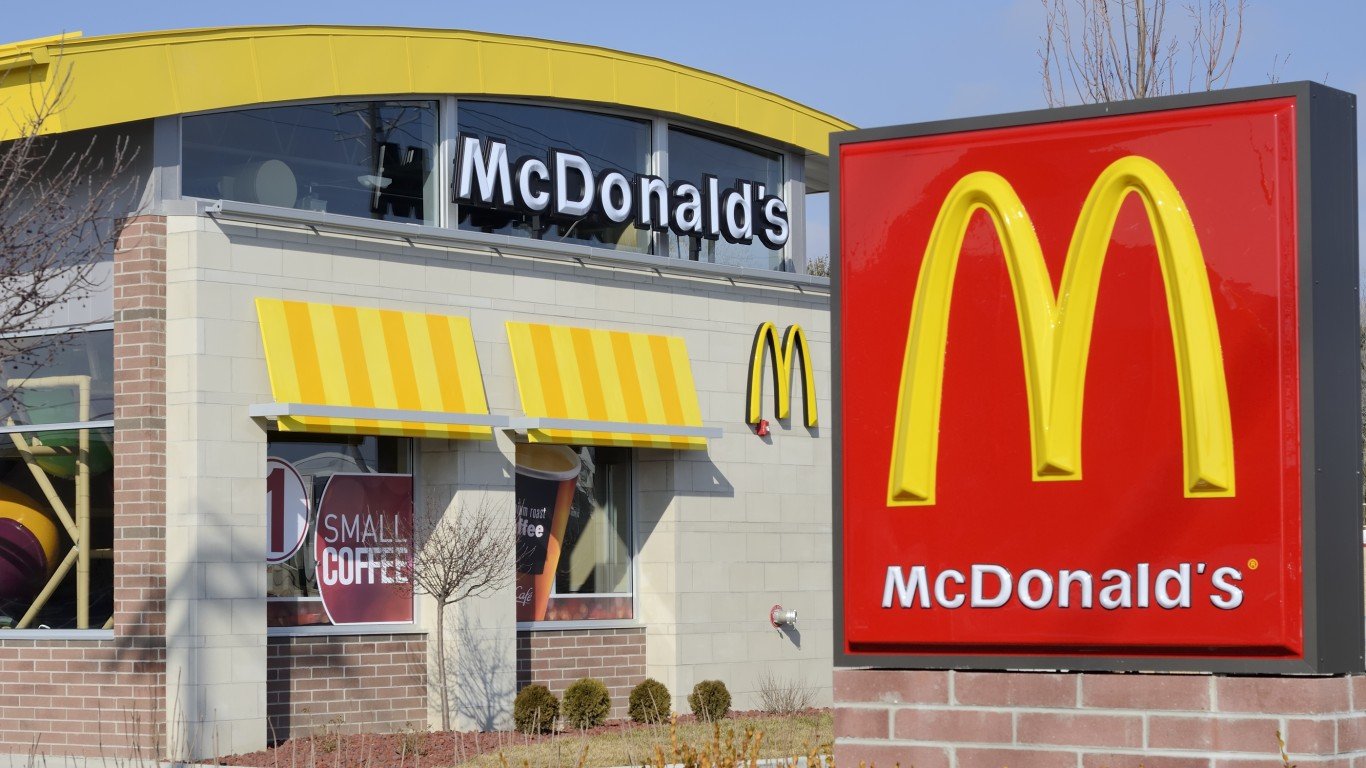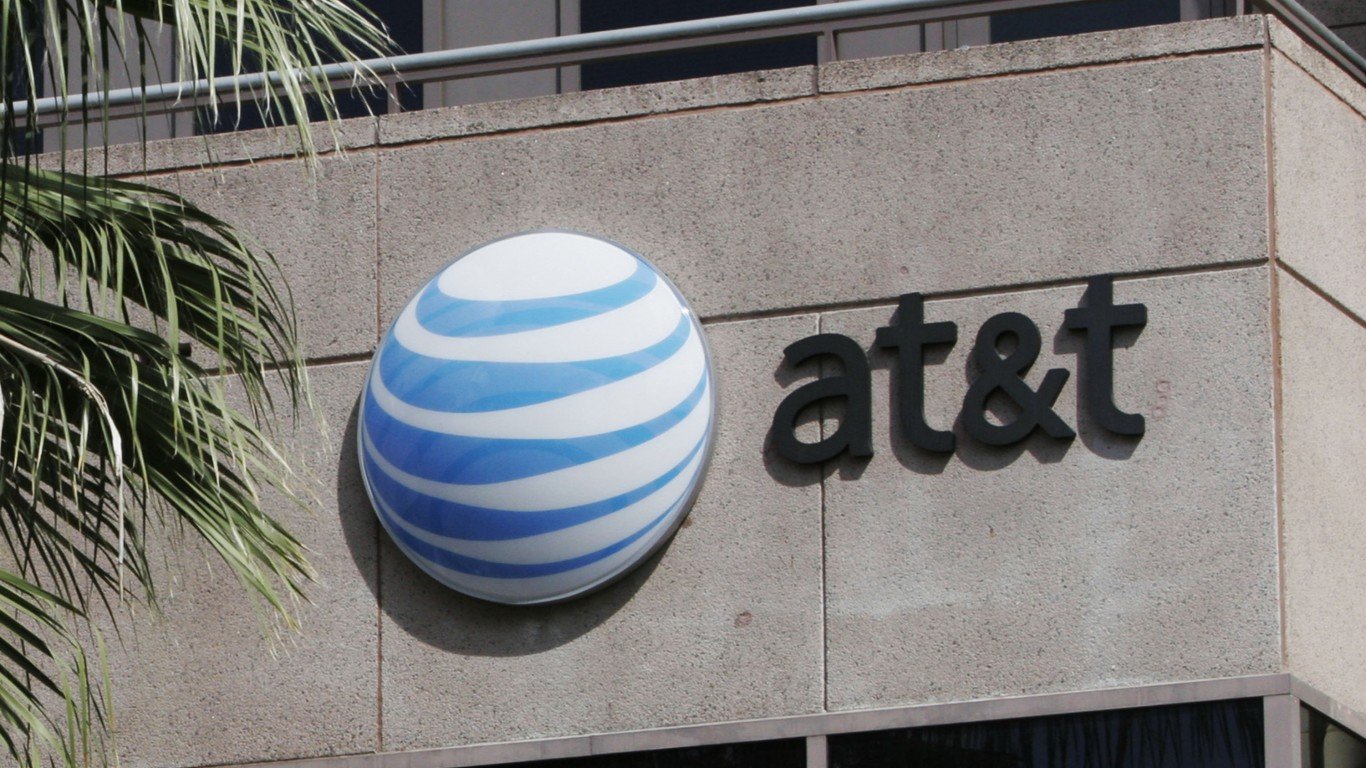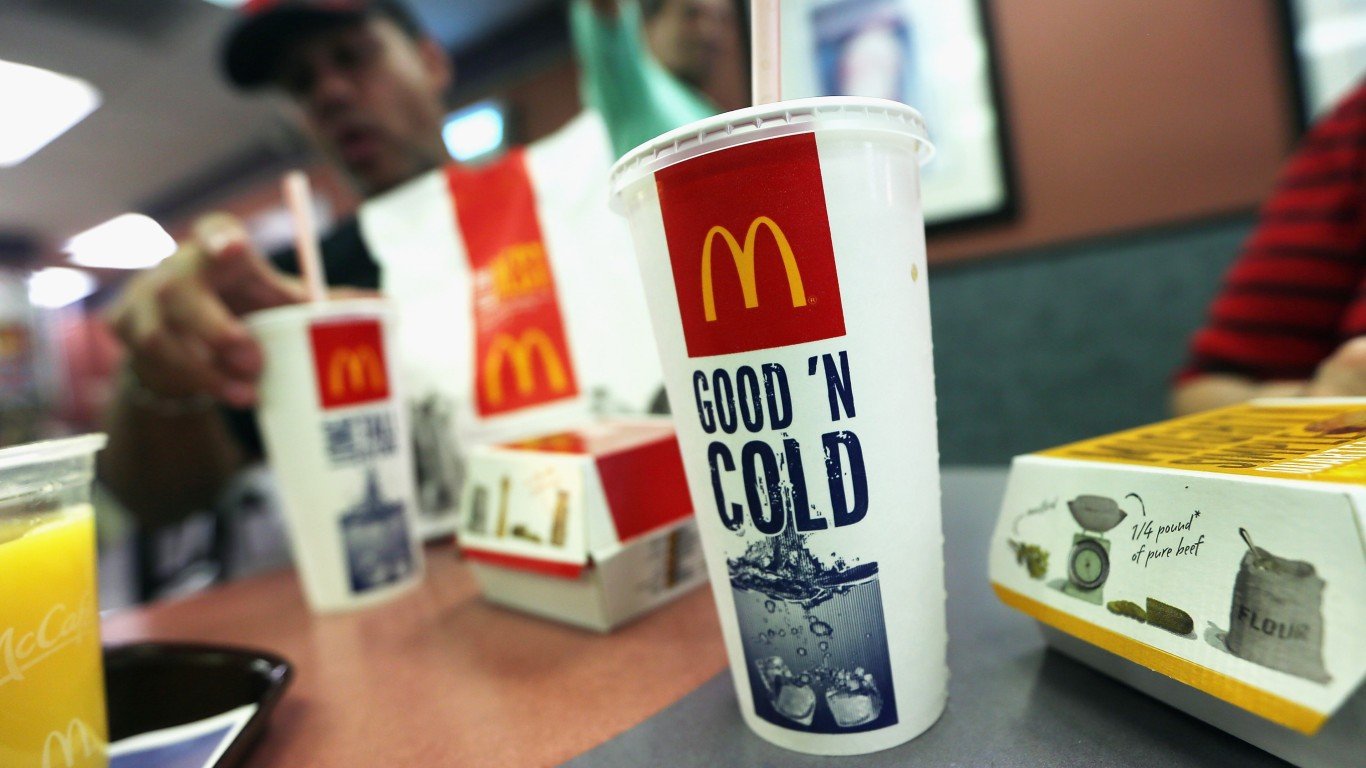

Sometimes having the first-mover status can be a great advantage. McDonald’s Corp. (NYSE: MCD) was not the world’s first hamburger chain by a long shot, but the company does date back to about 1940, and it has grown into the world’s largest food retailer by market capitalization. The company was already large enough by in the 1980s that it became a member of the Dow Jones industrial average, but its overall market value continues to dwarf a combination of any of its rivals.
McDonald’s has been undergoing a major revamp of its food and menu items, and it was not so long ago that the company began migrating to a most franchised business model rather than wanting to own as many stores as it could.
The company had 37,855 locations in over 100 countries at the end of 2018. Its total revenues have been declining because it migrated from franchising and owning stores model to mostly a franchise model. On last look, approximately 93% of McDonald’s restaurants worldwide were owned and operated by independent businesspersons. McDonald’s had revenue of $21 billion and an operating profit of almost $8.6 billion in 2018. Its net income from continuing operations was $5.92 billion. McDonald’s also recently expanded its artificial intelligence efforts to lead the industry on menu prioritization, and McDonald’s is a classic defensive stock that will hold up well even in market corrections and big sell-offs.
It seems fair to at least wonder if the real value of McDonald’s is overestimated when compared to the rest of the fast-food and casual dining universe. 24/7 Wall St. has looked at this in the past, but McDonald’s still carries a market capitalization that is larger than all its largest public direct competitors in fast food and casual dining combined. We have taken a look at revenues and operating profits of each, as well as net income from continuing operations and the number of store locations that each company counts in their rosters.
Before getting into the details on each, it is important to consider that doing any analysis of this sort comes with great caveats and that it should really be used as a generality rather than for specific metrics. That is because some chains are all or almost all franchise versus company-owned stores, while other chains are a combination thereof. And when it comes to restaurant holding companies with multiple chain names and themes, they may have shared locations or at least have shared resources. And some so-called stores can in some cases be considered kiosks compared to average store size.
Another issue to consider is that this review is only of the top restaurant chains, those with a market cap of $5 billion (save one), and those that are identifiable as public companies. Subway is not public, so it was not counted despite more than 42,000 mostly franchised locations. That also means that Jack in the Box, Brinker (Chili’s), Dine Brands (Applebee’s and IHOP), Shake Shack, Texas Roadhouse, Wingstop, Buffalo Wild Wings and the dozens of other smaller chains that are public or private were not included in the mix here.
Yum! Brands Inc. (NYSE: YUM) is the second largest restaurant chain behind McDonald’s by market cap, but that second-place showing is a distant second, with a market cap of $32.4 billion. At the end of 2018, Yum counted 22,621 KFC units, 18,431 Pizza Hut units and 7,072 for Taco Bell that were owned or franchised in approximately 140 countries and territories. It spun off the Yum China play but still gets a solid royalty payment on the sales in China for an added value to the former parent company. Yum had revenues of almost $5.7 billion in 2018, with operating income of $1.75 billion and net income from continuing operations of $1.54 billion.
Chipotle Mexican Grill Inc. (NYSE: CMG) has a $19.7 billion market cap. In the latest quarterly report, the company said that it opened 15 new restaurants during the quarter and closed two to end the quarter with a total restaurant count of 2,504. Chipotle’s 2018 revenue was almost $4.9 billion, with operating income of $357 million and net income from continuing operations was $176 million. It almost seems ironic that Chipotle is this valuable again considering that McDonald’s spun Chipotle off more than a decade ago.
Darden Restaurants Inc. (NYSE: DRI) has a $14.5 billion market cap and it owns and operates full-service restaurants in the United States and Canada. In 2018, it owned and operated approximately 1,746 restaurants under the more recognized Olive Garden and LongHorn Steakhouse brands, but it also has the brands of Cheddar’s Scratch Kitchen, Yard House, Capital Grille, Bahama Breeze, Seasons 52 and Eddie V’s. Darden has a May year-end, and its 2018 revenue was almost $8.1 billion, resulting in operating profit of $789 million and net income from continuing operations was $604 million.
Restaurant Brands International Inc. (NYSE: QSR) is technically a Canadian company, and the parent of Tim Hortons, with 4,846 name-brand stores with a $16.5 billion market cap. The company has to be included in this review because it also owns and franchises U.S. and international locations for Burger King (17,796 locations) and Popeye’s (3,102 locations) as of December 31, 2018. Restaurant Brands had over $5.3 billion in revenue in 2018, resulting in an operating profit of $1.95 billion and net income from continuing operations of $1.14 billion.
Domino’s Pizza Inc. (NYSE: DPZ) has an $11.6 billion market cap and is of course known for its pizza delivery that has expanded into many other food items on its menu. As of March 22, 2019, Domino’s counted approximately 15,900 owned and franchised stores in 85 markets. Its revenue in 2018 was $3.4 billion, with operating income of $572 million and net income from continuing operations of $362 million.
Dunkin’ Brands Group, Inc. (NASDAQ: DNKN) had a market cap of $6.2 billion. Its five segments are Dunkin’ U.S., Dunkin’ International, Baskin-Robbins International, Baskin-Robbins U.S. and U.S. Advertising Funds. At the end of 2018, the company had 12,871 Dunkin’ restaurants and 8,041 Baskin-Robbins restaurants that are all franchised. Its 2018 revenue was $1.3 billion, resulting with an operating profit of $398 million and net income from continuing operations of $230 million. Dunkin’ is also a defensive company that should hold up in hard times.
Wendy’s Co. (NASDAQ: WEN) had a restaurant system of mostly franchised stores, with a total of 6,711 units at the end of 2018. Its market cap is $4.2 billion, and its preliminary revenue for 2018 was $1.6 billion. Its operating profit was $250 million, and net income from continuing operations was $460 million, if you count a recognized gain from its prior Inspire/Arby’s sale.
Perhaps the biggest question to ask off the bat is whether Starbucks Corp. (NASDAQ: SBUX) should be included here, with its $95 billion market cap. When most people think of Starbucks, it’s generally as a coffee and beverage destination. That is changing, and the company did have a direct hand among other pressures for McDonald’s to ramp up its game on coffees and food products. And Starbucks coffee is sold on shelves at thousands of retail locations and there are many other kiosks that also brew and sell Starbucks. As of February 27, 2019, the company operated approximately 25,000 stores globally. Starbucks has an unusual year-end in the third quarter of each year, but its revenue in 2018 was $24.7 billion, with an operating profit of $3.8 billion and net income from continuing operations of $4.52 billion.
The table below shows how these all compare against each other for a better reference. It shows McDonald’s versus competitors, with a number of stores (as of last reporting date), a market capitalization rate, revenues for the latest fiscal year, and gross income from operations and net income from continuing operations. The dollar signs are represented as billions of dollars. This includes the fast-food chains, then it represents the top fast-food chains plus Starbucks for a larger comparison.
| OTHER CHAINS | Stores | Market Cap | Revenue | Operating Income | Net Income |
|---|---|---|---|---|---|
| Yum Brands | 48,124 | $32.40 | $5.70 | $1.75 | $1.54 |
| Chipotle | 2,504 | $19.70 | $4.90 | $0.36 | $0.18 |
| Darden | 1,746 | $14.50 | $8.10 | $0.79 | $0.60 |
| Restaurant Brands | 25,744 | $16.50 | $5.30 | $1.95 | $1.14 |
| Domino’s | 15,900 | $11.60 | $3.40 | $0.57 | $0.36 |
| Dunkin’ | 20,912 | $6.20 | $1.30 | $0.40 | $0.23 |
| Wendy’s | 6,711 | $4.20 | $1.60 | $0.25 | $0.46 |
| TOTAL | 121,641 | $105.10 | $30.30 | $6.07 | $4.51 |
| McDONALD’s | 37,855 | $151.00 | $21.00 | $8.60 | $5.90 |
| Starbucks | 25,000 | $95.00 | $24.70 | $3.80 | $4.52 |
| Everyone Else | 121,641 | $105.10 | $30.30 | $6.07 | $4.51 |
| SBUX + Everyone | 146,641 | $200.10 | $55.00 | $9.87 | $9.03 |
| McDONALD’s | 37,855 | $151.00 | $21.00 | $8.60 | $5.90 |
Take This Retirement Quiz To Get Matched With An Advisor Now (Sponsored)
Are you ready for retirement? Planning for retirement can be overwhelming, that’s why it could be a good idea to speak to a fiduciary financial advisor about your goals today.
Start by taking this retirement quiz right here from SmartAsset that will match you with up to 3 financial advisors that serve your area and beyond in 5 minutes. Smart Asset is now matching over 50,000 people a month.
Click here now to get started.
Thank you for reading! Have some feedback for us?
Contact the 24/7 Wall St. editorial team.
 24/7 Wall St.
24/7 Wall St. 24/7 Wall St.
24/7 Wall St.


